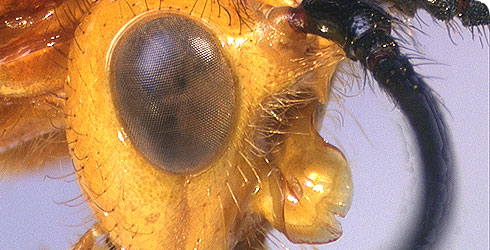Morphology and evolution
Morphology
13mm long, the female (at least, because the male is as yet unknown) has a distinctive facial protuberance in the form of a cupped plate like process.
Evolution
Appears to be related to two other Afrotropical genera Plaxopsis and Zanzopsis, which also have facial modifications (of unknown function) and often have pink to violet pigmented tissue around the base of the abdomen.
This conclusion is additionally weakly supported by a 28S ribosomal DNA sequence that was produced from DNA extracted from a middle leg of the only known specimen.
